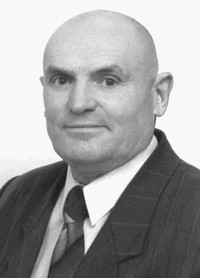COMPARATIVE ANALYSIS OF MOTOR ACTIVITY AND PHYSICAL FITNESS OF AGE PEOPLE BEFORE AND AFTER THE PANDEMIC
Ключевые слова:
age group, motor activity, independent studies, restriction, period, organized classesАннотация
Objective of the study was to assess the level of physical activity and its impact on the indicators of physical fitness of older people before and after the end of the pandemic.
Methods and structure of the study. Since 2018, a pedagogical experiment has been conducted at the Faculty of Physical Education of the National Research Tomsk State University to study the effect of physical activity of older people on the duration and quality of their life. Since March 2020, due to the pandemic, organized classes have been suspended due to the high risk of COVID-19. The participants of the experiment were given methodical and practical recommendations for independent physical exercises. Immediately after the resumption of organized classes, a sociological survey and testing of the level of physical fitness were conducted.
Results and conclusions. A break in organized physical exercises for older women caused the following changes in their psychophysical state: all participants in the experiment noted a lack of physical activity; in 35% of the subjects during the pandemic, their own weight increased from 2 to 6 kg; 25% experienced a depressed psychological state associated with limited communications and prolonged solitude, and 30% of the participants in the experiment, by the end of the pandemic, noted a significant deterioration in well-being. The reasons for the decrease in the indicators of motor activity of the subjects are associated with irreversible age-related changes in the psychophysiological state of the organism of the participants in the experiment, supplemented by a forced two-year period of motor restrictions, as well as the lack of organized physical exercises with an instructor.
Библиографические ссылки
Sotsialnaya psikhologiya stareniya [Social psychology of aging]: Study guide for university students in the specialty "Psychology". O.V. Krasnova, A.G. Leaders [ed.]. Moscow: Academia publ., 2002. 288 p.
Pietilya I., Dvoryanchikova A.P., Shilova L.S. Rossiyskoye zdravookhraneniye: ozhidaniya naseleniya[ Russian health care: expectations of the population]. Sotsiologicheskiye issledovaniya. 2007. No. 5. pp. 81-88.
Shilko V.G., Guseva N.L., Lim M.S. Vliyaniye dvigatelnoy aktivnosti vozrastnykh lyudey na pokazateli fizicheskoy podgotovlennosti [Influence of motor activity of age people on indicators of physical fitness]. Teoriya i praktika fizicheskoy kultury. 2021. No. 10. pp. 89-90.
Ware J.E., Snow K.K., Kosinski M., Gandek B. SF-36 Health Survey. Manual and interpretation guide. The Health Institute, New England Medical Center. Boston, Mass. 1993.

Дополнительные файлы
Опубликован
Версии
- 2022-12-25 (2)
- 2022-12-25 (1)
Как цитировать
Выпуск
Раздел
Лицензия

Это произведение доступно по лицензии Creative Commons «Attribution» («Атрибуция») 4.0 Всемирная.
